|
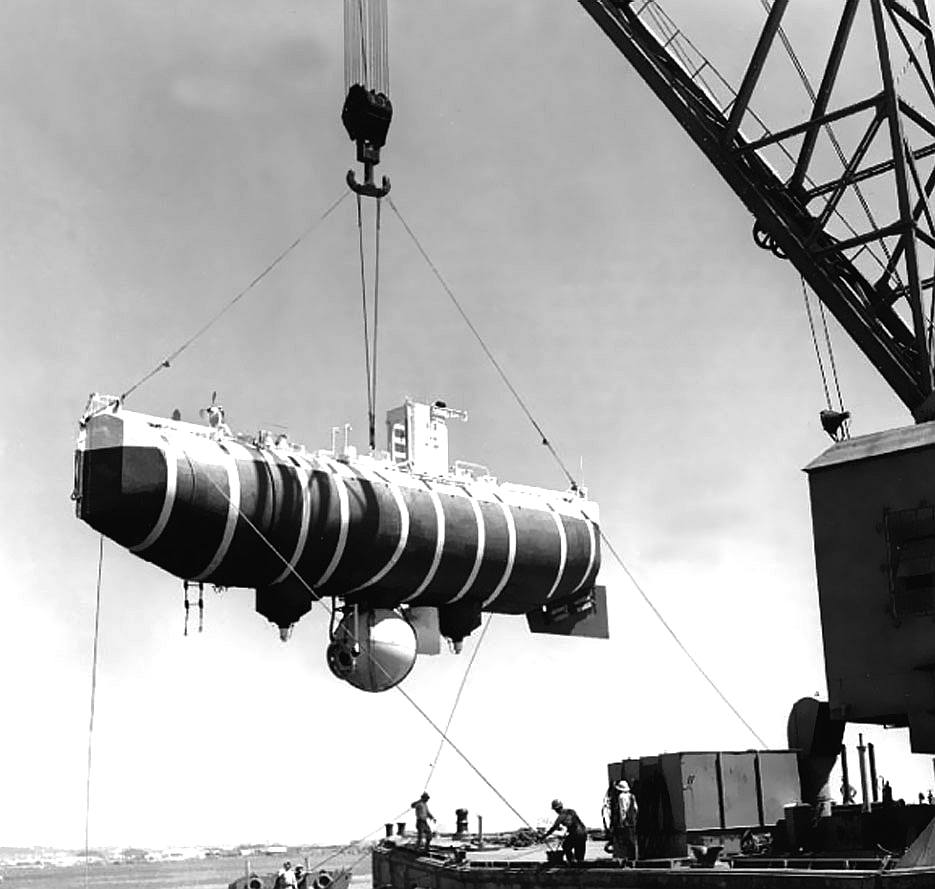
1959
- Trieste Bathyscaphe loading
The Trieste is a
Swiss-designed, Italian-built deep-diving research bathyscaphe ("deep boat") with a crew of two, which reached a record maximum depth of about 10,911 metres (35,797 ft), in the deepest known part of the Earth's oceans, the Challenger Deep, in the Mariana Trench near Guam, on 23 January 1960, crewed by Jacques Piccard (son of the boat's designer Auguste Piccard) and U.S. Navy Lieutenant Don Walsh achieving the goal of Project Nekton.
Trieste was the first manned vessel to have reached the bottom of Challenger Deep.
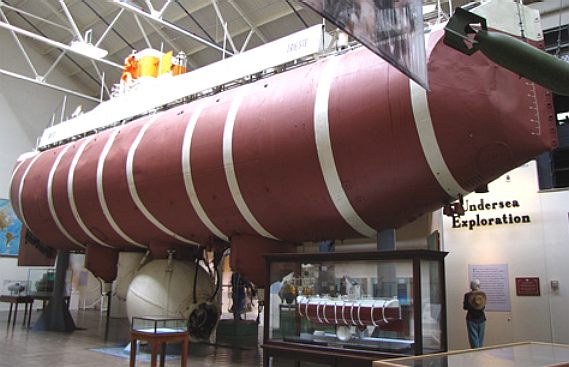
DESIGN
The Trieste consisted of a float chamber filled with gasoline for buoyancy, with a separate pressure sphere to hold the crew. This configuration (dubbed a bathyscaphe by the Piccards) allowed for a free dive, rather than the previous bathysphere designs in which a sphere was lowered to depth and raised from a ship by cable.
The Trieste was designed by the Swiss scientist Auguste Piccard and built originally in
Italy. His pressure sphere, composed of two sections, was built by the company Acciaierie Terni, and the upper part was manufactured by the company Cantieri Riuniti dell'Adriatico, in the Free Territory of Trieste (on the border between Italy and Yugoslavia); hence that name was chosen for the bathyscaphe. The installation of the pressure sphere was done in the Cantiere navale di Castellammare di Stabia, near Naples. The Trieste was launched on 26 August 1953 into the Mediterranean Sea near the Isle of Capri. The design was based on previous experience with the bathyscaphe FNRS-2, also designed by the Piccards. (It was built in Belgium). Trieste was operated by the
French Navy. After several years of operation in the Mediterranean Sea, the Trieste was purchased by the United States Navy in 1958 for $250,000.
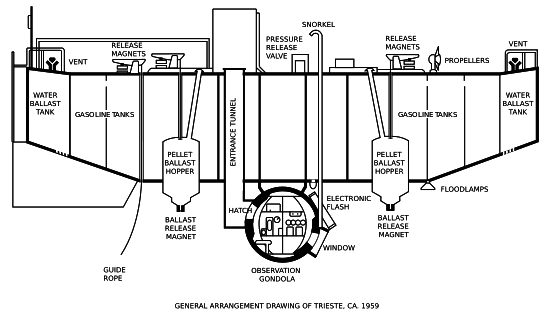
At the time of Project Nekton, the Trieste was more than 15 m (50 ft) long. The majority of this was a series of floats filled with 85,000 litres (22,000 US gal) of gasoline, and water ballast tanks were included at either end of the vessel, as well as releasable iron ballast in two conical hoppers along the bottom, fore and aft of the crew sphere. The crew occupied the 2.16 m (7.09 ft) pressure sphere, attached to the underside of the float and accessed from the deck of the vessel by a vertical shaft that penetrated the float and continued down to the sphere hatch.
In the Trieste the pressure sphere provided just enough room for two people. It provided completely independent life support, with a closed-circuit rebreather system similar to that used in modern spacecraft and spacesuits: oxygen was provided from pressure cylinders, and carbon dioxide was scrubbed from breathing air by being passed through canisters of soda-lime. Power was provided by batteries.
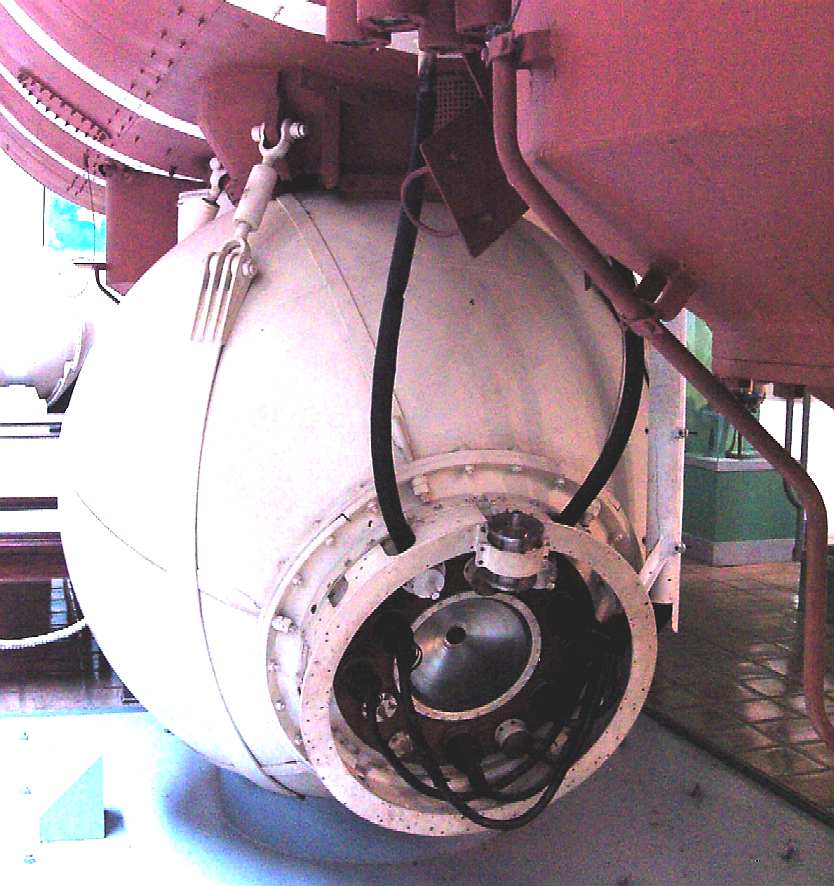
The Trieste was later fitted with a new pressure sphere, manufactured by the Krupp Steel Works of Essen, Germany, in three finely-machined sections (an equatorial ring and two caps). To withstand the great pressure of 1.25 metric tons per cm² (110 MPa) at the bottom of Challenger Deep, the sphere's walls were 12.7 centimetres (5.0 in) thick (it was overdesigned to withstand considerably more than the rated pressure). The sphere weighed 13 metric tons in air and eight metric tons in water (giving it an average specific gravity of 13/(13-8) = 2.6 times that of sea water). The float was necessary because of the sphere's density: it was not possible to design a sphere large enough to hold a person that would withstand the necessary pressures, yet also have metal walls thin enough for the sphere to be neutrally buoyant. Gasoline (petrol) was chosen as the float fluid because it is less dense than water, incompressible even at extreme pressure, thus retaining its buoyant properties and negating the need for thick, heavy walls for the float chamber.
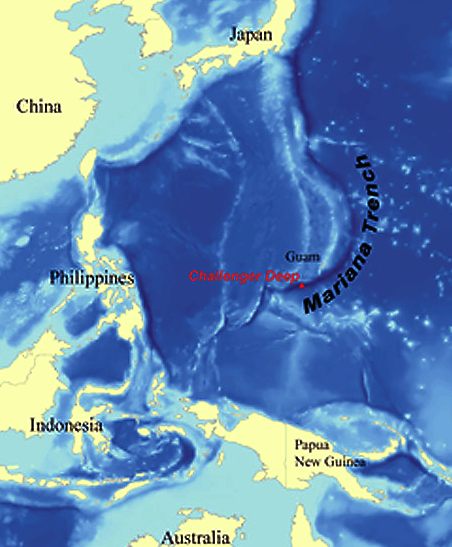
Observation of the sea outside the craft was conducted directly by eye, via a single, very tapered, cone-shaped block of acrylic glass (Plexiglas), the only transparent substance identified which would withstand the pressures needed, at the design hull thickness. Outside illumination for the craft was provided by quartz arc-light bulbs, which proved to be able to withstand the over 1000 atmospheres of pressure without any modification.
Nine tons of magnetic iron pellets were placed on the craft as ballast, both to speed the descent and allow ascent, since the extreme water pressures would not have permitted compressed air ballast-expulsion tanks to be used at great depths. This additional weight was held in place at the throats of two hopper-like ballast silos by electromagnets, so that in case of an electrical failure the bathyscaphe would automatically rise to the surface.
Transported to the Naval Electronics Laboratory's facility in San Diego, the Trieste was modified extensively by the Americans, and then used in a series of deep-submergence tests in the Pacific Ocean during the next few years, culminating in the dive to the bottom of the Challenger Deep in the Mariana Trench, the deepest part of the ocean, during January 1960.
MARIANA TRENCH DIVES
Trieste departed San Diego on 5 October 1959 for Guam aboard the freighter Santa Maria to participate in Project Nekton, a series of very deep dives in the Mariana Trench. On 23 January 1960, Trieste reached the ocean floor in the Challenger Deep (the deepest southern part of the Mariana Trench), carrying Jacques Piccard (son of Auguste) and U.S. Navy Lieutenant Don Walsh. This was the first time a vessel, manned or unmanned, had reached the deepest known point of the Earth's oceans. The onboard systems indicated a depth of 11,521 metres (37,799 ft), although this was revised later to 10,916 metres (35,814 ft); more accurate recent measurements have found the Challenger Deep to be between 10,911 metres (35,797 ft) and 10,994 metres (36,070 ft) deep.
The descent to the ocean floor took 4 hours and 47 minutes at a descent rate of 0.9 metres per second (3.0 ft/s). After passing 9,000 meters one of the outer Plexiglas window panes cracked, shaking the entire vessel. The two men spent barely twenty minutes at the ocean floor, eating chocolate bars for sustenance. The temperature in the cabin was 7°C (45°F) at the time. While on the bottom at maximum depth, Piccard and Walsh unexpectedly regained the ability to communicate with the surface ship, USS Wandank (ATA-204), using a sonar/hydrophone voice communications system. At a speed of almost a mile per second (about five times the speed of sound in air), it took about seven seconds for a voice message to travel from the craft to the surface ship and another seven seconds for answers to return.
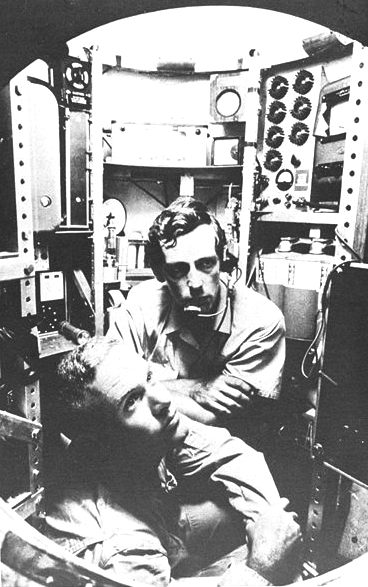
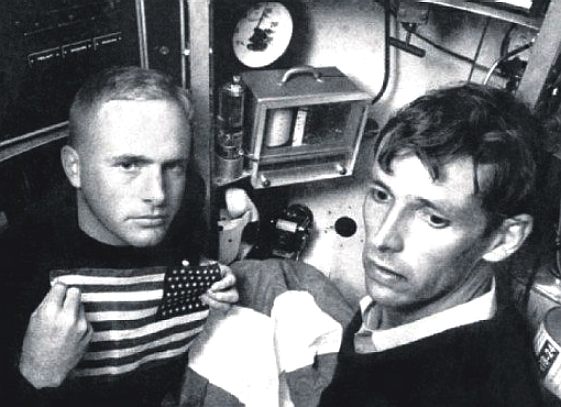
While on the bottom, Piccard and Walsh observed a number of small sole and
flounder. Their claim that the fish were swimming would prove that at least some vertebrate life can withstand the extreme pressure at the oceans' deepest point. They noted that the floor of the Challenger Deep consisted of "diatomaceous ooze". The ascent to surface took 3 hours, 15 minutes.
No manned craft returned to the Challenger Deep until 26 March 2012, when the dive was accomplished solo by the film director James Cameron in submersible Deepsea Challenger. Three other teams are preparing for attempts in 2012. A
Japanese
robotic craft Kaikō reached the bottom of the Challenger Deep in 1995. The Nereus hybrid remotely operated vehicle (HROV) reached the bottom on 31 May 2009.
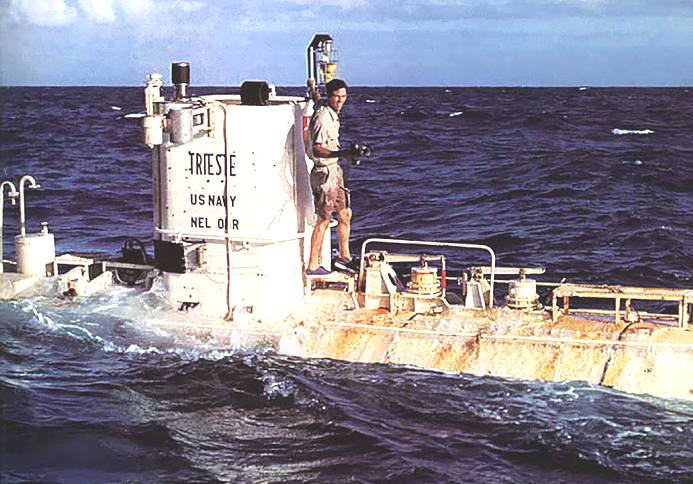
JACQUES PICCARD
Jacques Piccard was born in Brussels, Belgium to Auguste Piccard, who was himself an adventurer and engineer. Jacques' father Auguste twice beat the record for reaching the highest altitude in a balloon, during 1931–1932. The Piccard family thus has the unique distinction of breaking world records for both the highest flight and the deepest dive.
* Jules Piccard (professor of chemistry)
* Auguste Piccard (physicist, aeronaut, balloonist, hydronaut)
* Jacques Piccard (hydronaut)
* Bertrand Piccard (aeronaut, balloonist)
* Jean Felix Piccard (organic chemist, aeronaut, and balloonist)
* Jeannette Piccard (wife of Jean Felix) (aeronaut and balloonist)
* Don Piccard (balloonist)
Jacques's father, who had already set altitude records in his balloon, started using the buoyancy technique used in balloons for developing a submersible vehicle, the bathyscaphe. Jacques initially started out his career by teaching economics at
University of Geneva while continuing helping his father improve the bathyscaphe to demonstrate its potential for operating in deep waters. Together they built three bathyscaphes between 1948 and 1955, which reached record depths of 4,600 feet and 10,000 feet (the last one was bought by the government). With this success, the younger Piccard abandoned economics to collaborate with his father on further improving the bathyscaphe and demonstrating its practicality for exploration and research.
Jacques's son Bertrand Piccard is continuing his family traditions. He commanded the first nonstop balloon flight around the world in March 1998.
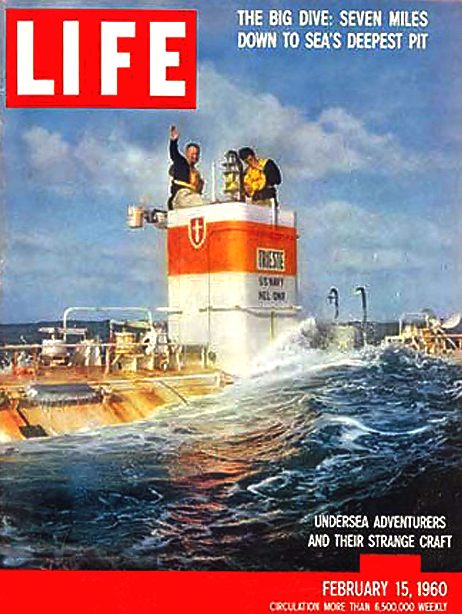
CHALLENGER MISSION
Jacques sought financial help from the U.S.
Navy, which at that time was exploring various ways of designing submarines for underwater research. Jacques was welcomed to the U.S. to demonstrate his bathyscaphe, now named the Trieste. Impressed by his designs, the U.S. Navy bought the vessel and hired Piccard as a consultant. Recognizing the strategic value of a workable submersible for submarine salvage and rescue, the Navy began testing the Trieste for greater depths.
With his Trieste able to reach depths of 24,000 feet, Piccard and his colleagues planned on an even greater challenge—a voyage to the bottom of the sea. On 23 January 1960, Piccard and Lt. Don Walsh reached the floor of the Mariana Trench located in the western North
Pacific Ocean. The depth of the descent was measured at 10,916 meters (35,813 feet); later, more accurate, measurements during 1995 found the Mariana Trench to be slightly less deep at 10,911 m (35,797 ft). The descent took almost five hours. The bathyscaphe carried no scientific equipment and no experiments were conducted; the mission's purpose was merely to prove that the depth could be reached. The descent progressed without incident until 30,000 feet, when the crew heard a loud crack. They continued the dive, however, finally touching down in "snuff-colored ooze" at 35,800 feet.
When they reached the featureless seabed, they saw a flat fish as well as a new type of shrimp. Marine biologists later disputed their observations, claiming that no
fish could survive the 17,000 psi pressure at such depths. Upon discovering cracks in the viewing windows, Piccard cut the voyage short. After only a 20-minute stay on the bottom, they began dumping ballast for their return to the surface, and the damaged vessel returned to its escort ships without incident in three hours and 15 minutes.
The historic dive received worldwide attention, and Piccard wrote an account of it, Seven Miles Down, with Robert Deitz, a renowned geologist who had helped plan the mission. A planned return expedition, however, never occurred. The Trieste was expensive to maintain and operate. It was incapable of collecting samples and could not take photographs and so had little scientific data to show for its voyages. The original vessel was retired in 1961, although a rebuilt version later located the remains of two lost U.S. Navy
nuclear submarines, the Thresher and the Scorpion.
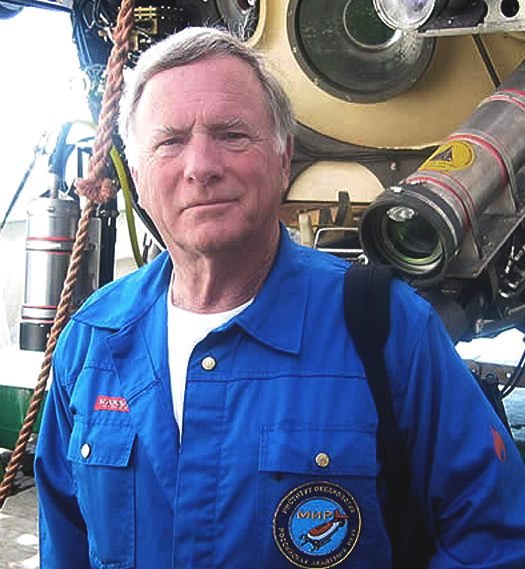
DON
WALSH
Don
Walsh has been associated with ocean science, engineering, and marine policy for more than 50 years. He was commissioned as an officer in the
United States Navy upon graduation from the United States Naval Academy in 1954. He attained the rank of Captain by the time he retired. He spent 15 years at sea, mostly in submarines, and was a submarine commander. He worked with ocean-related research and development for the Navy. Serving as Dean of Marine Programs and Professor of Ocean Engineering at the University of Southern California, Walsh initiated and directed the university's Institute for Marine and Coastal Studies. In 1989 his company, International Maritime Incorporated, contracted a joint venture with the P.P. Shirshov Institute of Oceanology to establish an underwater maintenance company, Soyuz Marine Service, which continues to operate in the Russian Federation.
Walsh received a Bachelor's degree in Engineering from the U.S. Naval Academy, a Master's degree in Political Science from San Diego State University, and a Master's degree and a Ph.D. in Physical Oceanography from Texas A&M University. He was appointed by Presidents Carter and Reagan to the U.S. National Advisory Committee on Oceans and Atmosphere, was a member of the Law of the Sea Advisory Committee for the U.S. Department of State, and served as a member of the Marine Board of the U.S. National Research Council from 1990 to 1993.
Walsh was named one of the world's great explorers by Life magazine. In the MIR submersible, he dived on the
RMS Titanic, the German battleship
Bismarck, and the Mid-Atlantic Ridge. He has spent more than five decades traveling the world conducting research in, on, and around the oceans.
On April 14, 2010, The National Geographic Society bestowed its greatest honor, the Hubbard Medal, on Walsh in a ceremony in Washington, D.C. at the
National Geographic headquarters. The U.S. Navy awarded Walsh its Distinguished Public Service Award.
Don
lives with his wife Joan in the Dora–Sitkum area of Oregon, near Coquille. He has managed a marine consulting business since 1976, and conducts about 5 deep-sea expeditions per year.
It was reported in 2010 that Walsh visited the deep-sea submersible Jiaolong and its makers at the China Ship Scientific Research Center. The craft had "planted a
Chinese flag on the bottom of the South
China Sea during a two-mile-deep dive in June" as the Chinese
program - which Walsh characterized as "very deliberate" - proceeded toward its ambitious goal of going to 7,000 meters, or 4.35 miles, in 2012.
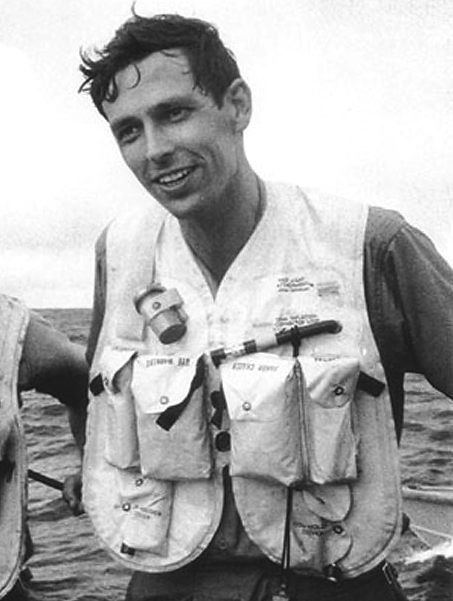
OTHER DEEP DIVES
Beginning April 1963, Trieste was modified and used in the Atlantic Ocean to search for the missing submarine USS Thresher (SSN-593). The Trieste was delivered to Boston Harbor by the USS Point Defiance (LSD-31) under command of Captain H. H.
Haisten. In August 1963, Trieste found the wreck off the coast of New England, 8,400 feet (2.56 km) below the surface. Trieste was changed, improved and redesigned so many times that almost no original parts remain. Trieste was transported to the
Washington Navy Yard where it was exhibited along with the Krupp pressure sphere in the National Museum of the
U.S. Navy at the Washington Navy Yard in 1980. Her original Terni pressure sphere was incorporated into the Trieste II.
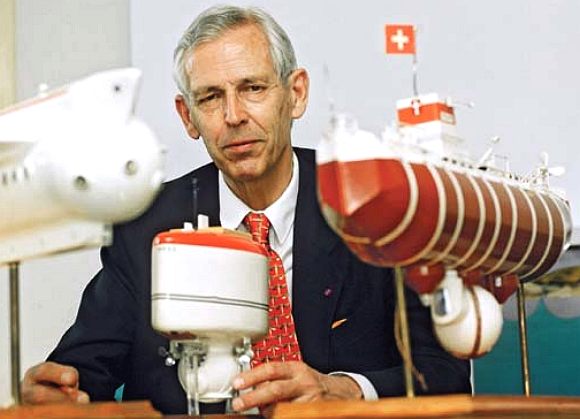
SUBMARINE
INDEX
Alvin
- DSV submersible
Deepsea
Challenger - James Cameron
HMS
Astute 1st of Class
BAE Systems
HMS
Vanguard- Trident
INS
Sindhurakshak - explosion
& sinking
Lusitania
- Torpedo
attack
Predator
- Covert submarine hunter/killer
Sealab
- US Navy underwater research laboratory
Seawolf
- Autonomous wolf pack deployment of Predator mini-subs
U20
- Kapitan Leutnant Walther Schwieger
USS
Bluefish WWI submarine
USS
Bluefish - Nuclear submarine
USS
Flying Fish
USS
Nautilus - 1st nuclear submarine & subsea north pole passage
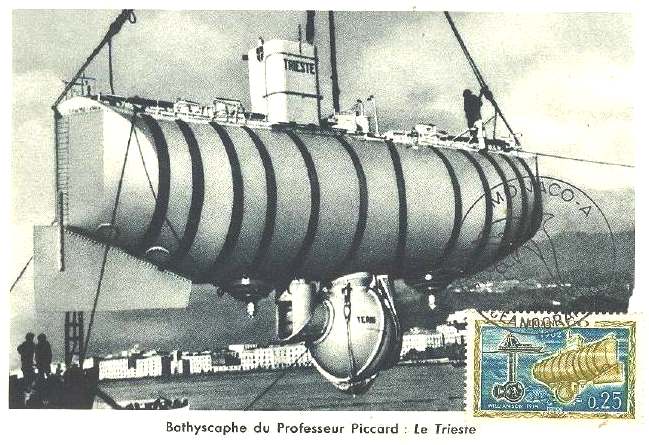
LINKS
http://en.wikipedia.org/wiki/Bathyscaphe_Trieste
http://rolexblog.blogspot.co.uk/2010/01/deepest-deep-sea-dive-in-history-us.html
https://en.wikipedia.org/wiki/U-boat
http://www.uboatarchive.net/
http://www.uboat.net/
http://www.lusitania.net/lastrestingplace.htm
http://www.history.navy.mil/wars/korea/minewar.htm
hhttp://en.wikipedia.org/wiki/HMHS_Britannic
hhttp://en.wikipedia.org/wiki/HMHS_Britannic
http://en.wikipedia.org/wiki/Admiralty_Mining_Establishment
http://en.wikipedia.org/wiki/Naval_mine
http://www.enterprise-europe-scotland.com/sct/news/?newsid=4306
|
Trieste,
Rolex History
- Youtube
|
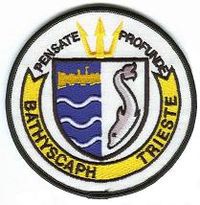
|








